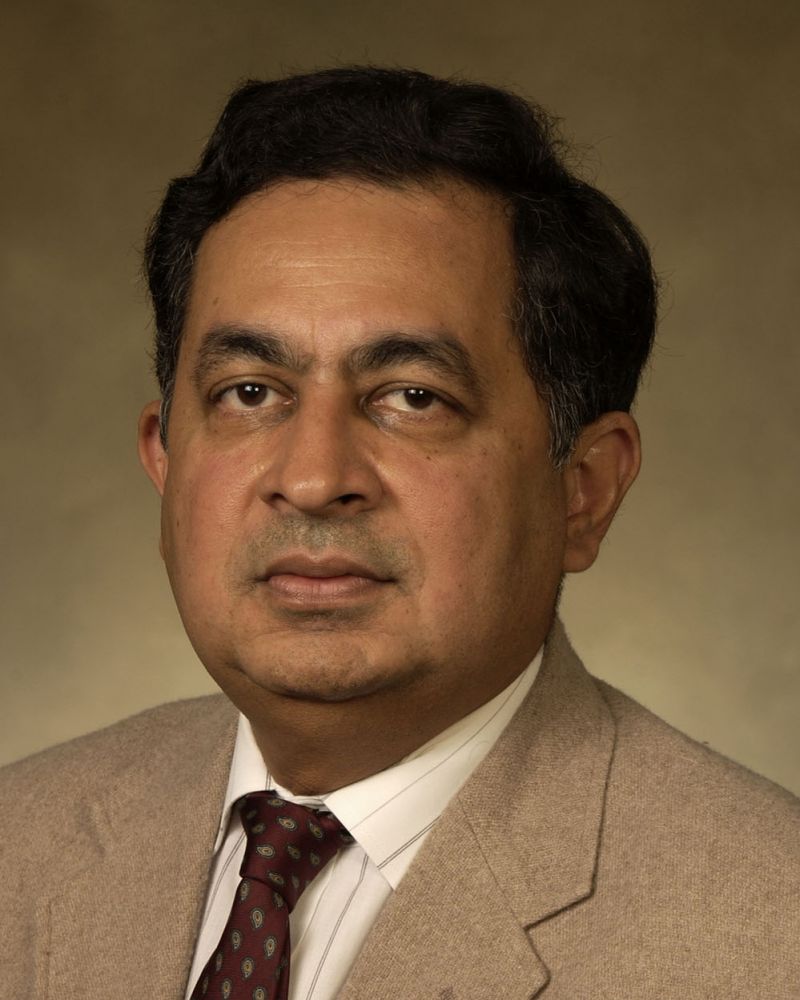Dr. Arunava Gupta
Professor Emeritus, Distinguished University Research Professor
Contact
- 1046 Bevill
- phone (205) 348-3822
- fax (205) 348-7558
Education
- Ph.D., Chemical Physics, Stanford University, 1980
- M.A., Chemistry, Columbia University, 1977
- M.Sc., Chemistry, Indian Institute of Technology, 1976
Dr. Arunava Gupta’s group focuses on controlled synthesis and assembly of nanomaterials and nanostructures, with emphasis on the exploration and manipulation of materials’ physical and chemical properties and their potential applications.
Spintronics, also known as magneto‐electronics, is an emerging technology which exploits the intrinsic spin of electrons and its associated magnetic moment, in addition to its fundamental electronic charge, in solid‐state devices. Spintronics exploits electron spin, creating a new class of devices that can potentially be scaled down to nano‐dimensions and can also provide additional functionality. The group is interested in the growth and characterization of novel magnetic thin films by a variety of deposition techniques, including chemical vapor deposition, pulsed laser deposition, etc. for the fabrication of devices, such as magnetic tunnel junctions and spin‐based semiconductors, and their application for storage, memory, and logic‐based devices.
Nanomaterials are of great interest for a wide range of applications, including catalysis, data storage, biotechnology/biomedicine, etc. In particular, the synthesis of monodisperse uniform‐sized nanocrystals using solution‐based methods is of key importance for these applications because of their strong dimension‐dependent physical and chemical properties. Dr. Gupta’s research group is interested in the synthesis of functional oxides and chalcogenides in the form of nanoparticles and other nanostructures with controlled shape, size, structure, etc.
In addition to traditional methods for the synthesis of inorganic nanomaterials, novel approaches are being developed that exploit advances in biotechnology. The bio‐inspired approach to materials synthesis has successfully utilized cells, viruses, and biomolecules, such as nucleic acids, proteins, etc., to produce inorganic nanomaterials with controlled crystal morphology, phase structure, and size, under mild conditions.
Affiliated Areas
Chemical and Biological Engineering
Selected Publications
- S. Palchoudhury, Z. Zhou, K. Ramasamy, F. Okirie, P. E. Prevelige, and A. Gupta, “Self-Assembly of P22 Protein Cages with Polyamidoamine Dendrimer and Cationic Nanoparticles,” J. Mat. Res. 32, 467 (2017).
- Z. Zhou, G. J. Bedwell, R. Li, S. Palchoudhury, P. E. Prevelige, and A. Gupta, “Pathways for Gold Nucleation and Growth over Protein Cages,” Langmuir 33, 5925 (2017).
- G. J. Bedwell, Z. Zhou, M. Uchida, T. Douglas, A. Gupta, and P. E. Prevelige, “Selective Biotemplated Synthesis of TiO2 Inside a Protein Cage,” Biomacromolecules 16, 214 (2015).
- Z. Zhou, G. J. Bedwell, N. Bao, P. E. Prevelige, and A. Gupta, “P22 Virus-like Particles Constructed Au/CdS plasmonic Photocatalytic Nanostructures for Enhanced Photoactivity,” Chem. Commun. 51, 1062 (2015).
- Zhou, G. J. Bedwell, R. Li, P. E. Prevelige, and A. Gupta, Formation Mechanism of Chalcogenide Nanocrystals Confined Inside Genetically Engineered Virus-like Particles,” Scientific Reports 4, 3832 (2014).
Awards and Honors
- CRSI Medal, Chemical Research Society of India, 2014
- Burnum Distinguished Faculty Award, University of Alabama, 2016
- SEC Faculty Achievement Award, University of Alabama, 2017
- Appointed Distinguished University Research Professor at The University of Alabama, March 2013.
- Elected Fellow, Materials Research Society, January 2017
